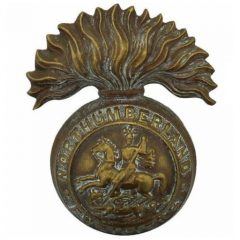Service Battalion - Staff Officers and SNCO's
HQ Company
Approximately 80 men.
Included the Bn transport section, signallers, stretcher bearers, pioneers and officer's batmen (personal servants)
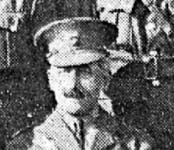
Officer Commanding:
Lt Col. Alfred James Foster
It is not clear how he first became involved in the lead manufacturing business; however Alfred’s grandfather James (b.1819) was the joint managing partner in the Tyneside firm of Locke & Blackett until 1856. The family then moved to Sussex, but returned to Tyneside in 1862 whereupon James set up the rival lead manufacturing plant of Foster, Blackett & Wilson at Hebburn in partnership with Robert Blackett and John Wilson . The company specialised in the production of white, red and orange lead as well as chemical sheet lead and lead pipes .
In 1871 seven year old Alfred (b.1864) was boarding at ‘The Mount School’ in Northallerton. His father James was listed in the census as a ‘Lead Refiner and Manufacturer’ employing 198 men and 102 women.
In 1874 James purchased the Hindley Hall estate near Stocksfield and relocated his family from Newcastle. On his death, five years later, the family moved into Hindley House, a smaller property on the estate, and rented the Hall out to colliery owner Matthew Liddell and family.
The 1891 Census lists Alfred as a Lead Manufacturer and Magistrate. He was now married to Mabel and along with his two children, was living in Hindley House along with five servants and a nurse. The Hall itself was still occupied by Matthew Liddell, his wife Hannah, one daughter and seven servants including a governess. The Liddells were colliery owners and philantropists in nearby Prudhoe. Matthew Liddell's father had bought three hundred acres in Prudhoe upon which he built Prudhoe Hall (more recently Prudhoe Hospital).
Alfred continued with the lead manufacturing business, but in another house move, probably linked to the general downturn in the fortunes of the lead manufacturing industry towards the end of the 19th Century, the family took up residence in Anick Cottage, a more modest property on the North bank of the Tyne, purchased from Mrs Isabel Clayton of ‘The Chesters’.
By 1903 the Liddells had relocated to Cheeseburn Grange, Stamfordham and the Richardsons had taken up residence in the Hall. John Wigham Richardson’s (1837-1908) father owned and ran a leather tanning business, but John was to make his fortune in the shipbuilding industry and founded the Neptune Works at Walker-on-Tyne. John’s first move up the property ladder occurred in 1866, when he moved his family from Elswick to Wingrove House, Fenham. The subsequent move to Hindley Hall coincided with a merger between the Neptune works and the Swan Hunter yard. The new company, Swan Hunter & Wigham Richardson, became the most technically advanced ship building firm in the world and one of it most famous products, was the Cunard line’s RMS Mauretania, launched in 1906 (Wikipedia). The Richardson’s occupation of Hindley Hall was shortlived, the Fosters finally selling the Hindley estate to the Pumphrey family in 1907 (Baker A. P.).
Led the battalion into battle at Ypres during April 1915. However, he fell ill during July 1915 and returned to England to convalesce.
Appointed Deputy Assistant Director at the Ministry of Munitions 16th Sep 1915.
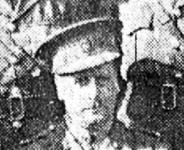
Second in command:
Maj. William Ernest Stephenson
William was the grandson of William Stephenson a Throckley farmer who in the early part of the 19th Century married Elizabeth Ward from Edmondbuyers, Northumberland. The couple resided at Throckley Farm Cottages and had nine children. The eldest son, William Haswell Stephenson married Elizabeth in Caistor, Lincolnshire and raised two daughters. William went on to become a successful businessman, owner of the Throckley Coal Co Ltd, mayor of Newcastle on seven occasions and one of the city’s greatest benefactors.
William was one of the sponsors of the project to build the Scotswood, Newburn and Wylam Railway. Also involved in the project were the Spencers, the family who owned the Newburn steelworks, and Thomas Bates who owned Heddon Colliery and brickworks. The line was built to serve the needs of the colleries and works owned by these industrialists on the North bank of the Tyne, but it undoubtedly also helped to unite the 4th NF and enable it to function as a cohesive unit.
In July 1899 Stephenson wrote a letter to the press offering to erect a statue of Queen Victoria as a way of marking the 500th anniversary of Newcastle's shrievalty which was about to fall in the following year The statue was built and Mr Stephenson was knighted.
His younger brother Charles John Stephenson married Annie and had two children, Elizabeth (b.1874) and William Ernest (b.1875, Walbottle). The family lived at Throckley Farm cottages (1871 Census, 1871). William Ernest Stephenson was educated at Leys School, Cambridge and also in Germany. From 1893 onwards William Ernest was an employee of his uncle’s William’s business. William also joined the Newburn Coy of the 2nd VB and served with one of the Volunteer Service Companies (VSC) during the Boer War
He was an excellent shot and figured prominently in Bisley competitions for many years. He was in splendid shooting form and carried away the honours of the day, being first in the Lambton Cup. He was also first for the County prizes and the Grand Aggregate, taking the leading prizes in both these shoots.
William suffered badly from the effects of poison gas and was sent home. He reported for duty with the 3/4th NF in Hexham and was appointed Bde Major on the 4th Oct 15. William was serving at Rolston Camp near Hornsea in 2 Jan 1919. When his uncle (William Haswell Stephenson) died in 1918, William became Managing Director of Messrs. Stephenson & Sons and married Canadian socialite Ruth Sherwood (b.1886). The Company did not fair well in the interwar years and an Official Notice in the London Gazette, published 31st August 1954, shows that the Throckley Coal Company Ltd was wound up:
At an Extraordinary General Meeting of the Members of the Company held at 31, Mosley Street, Newcastle upon Tyne, on Thursday, the day of August, 1954, the following Resolution, was duly passed as a Special Resolution:— "That the Company be wound up voluntarily and that John Sherwood Stephenson, of Milburn House in the city and county of Newcastle upon Tyne, and Joseph Michael Smith Coates, of 31, Mostey Street, Newcastle upon Tyne aforesaid, be and they are hereby appointed Liquidators for the purposes of such winding-up." J. S. Stephenson, Chairman.
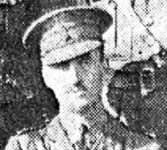
Maj. Bertrand Dees Gibson
The Hexham firm of Gibson & Co was founded in 1815 by Jasper Gibson. By 2012 it was England's oldest family-run solicitors' practice with offices in Hexham, Bellingham and Newcastle . Jasper’s great great grandson Wilfrid Gibson (b.1850) was born in Salford and educated at Ushaw College, Durham. Wilfrid married Ann Margaret Dees in 1874 and their first child Bertrand Dees Gibson was born in 1876. In 1881 the family was residing at Acomb House and Wilfrid was a practising solicitor and a Captain in the 1st VB. During his career Wilfrid was Treasurer of St Cuthbert's Society; Member of the Catholic Education Council; Vice- President of the Hexham and Newcastle Voluntary Schools Association. He also attained the rank of Lt Col in the 1st VB and commanded it from 1901.
Bertrand was admitted to the Bar in October 1899 and joined his father in the Hexham practice, which was renamed W. & B. D. Gibson. Bertrand was also commissioned into the 1st VB and married (m.1907) in ……. in Kingston, Middlesex. (Kelly's Directory, 1910).
Wilfrid’s cousin, Jasper Craven Gibson (b.1865) of Battle Hill, Hexham, was also admitted to the bar in 1896 and joined the family firm. He was Clerk to the Tyne Salmon Conservancy and Lt Colonel in the 1st VB from 1903.
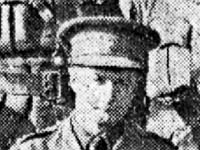
Adjutant:
Capt. Bernard Cruddas
Bernard was born on the 1st of January 1882 in Stoke Bishop/Barton Regis near Bristol, Gloucestershire and educated at Winchester College. His father was from North Shields, but his mother was a local from Bristol. He was commissioned into a volunteer battalion of the North Staffordshire Regiment in 1899, but the following year transferred to the Regular Army and the Northumberland Fusiliers. The 1901 Census shows him at Strensall barracks near York. Bernard was transferred from the 1st NF to the 4th NF on …….. and served as the adjutant until …., whereupon he was transferred to …… In 1914 Bernard was living at The Lea, Riding Mill. (Kelly's, p. 97). Bernard was awarded the Distinguished Service Order during WW1.
His daughter Evelyn Margaret Cruddas was born in 1919
He was elected as a Conservative Member of Parliament (MP) for Wansbeck at the 1931 general election, and returned at the 1935 election. He stood down in 1940. Bernard was High Sherrif of Northumberland in 1942 and living at Middleton Hall, Morpeth. Bernard died on the 23rd of December 1959. His wife, Dorothy Wilkinson died in 1964 and daughter in 2001 at Hexham.
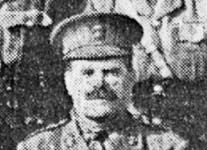
Quarter- Master:
Lt William Henry Wynnsford
Born 1870 in Leicestershire. Former regular soldier who joined the Fusiliers on 15th March 1891. Married at Dover in 1892. Served in Newcastle, Woolwich, Aldershot, Dover, Lydd, Dover, Aldershot, Hilsea, Portsmouth, Singapore, Penang, Portland, Malta and South Africa.Former 4th Bn Col-Sgt and Acting Sgt-Major. Appointed Quartermaster, with the honorary rank of Lieutenant, effective 16th April, 1912. (The London Gazette 26 April 1912). Died 1944.
Responsible for Battalion stores and transport.
Medical Officer
Lt David Henderson Weir
Responsible for the medical orderlies and stretcher bearers
Padre

Regimental Sergeant Major
Sgt Maj. George Fewster
Previously with 'F' Haltwhistle Coy
Quarter- Master Sgt
Sgt P. Connell
Orderly Room Sgt
Sgt J. Scott
Drummer Sgt
Sgt J. Foster
Believed to have been responsible for the stretcher bearers who were often musicians from the Battalion Band
Cook Sgt
Sgt Robert A. Goodchild
Pioneer Sgt
Sgt P. Donnelly
Staff of 10 Privates responsible for construction, repair and general engineering duties
Provost Sgt
Sgt G. Birnie
Transport Sgt
Sgt R. Pittendreigh
Transport Section comprised 11 Privates responsible for Battalion horses, carts and bicycles
'Reserve' Battalion (2/4th) Staff Officers and SNCO's
HQ Company
Data on 126 men who enlisted in the Reserve Battalion is held.
The 2/4th battalion became part of the newly formed 188th Bde, 63rd Divn during January 1915. The 63rd Divn was tasked with home defence, but was disbanded in Jul 1916. The 2/4th joined the 217th Bde, 72nd Division, but continued with home defence duties. The 72nd Divn was broken up Jan - Apr 1918.
Officer Commanding:
OC - Maj. Edward Dixon
Second in command:
Maj. Robert Cecil Hedley
Born 1862. Farmer and auctioneer
Robert is listed in the London Gazette (dated the 10th of October 1911) as a captain and honorary major in the 4th Bn on the Retired List.
Medical Officer (RAMC)
Lt Robert Lowis Routledge
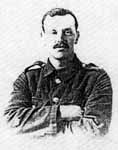
CSM Matthew S Charlton
